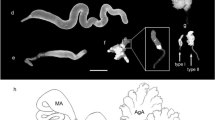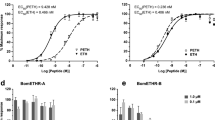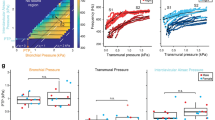Abstract
IT has been found that the production of fibroin from the ampullate glands of the spider, Araneus sericatus, can be stimulated both by cholinergic agents and by emptying the gland1. However, as will be shown here, the cylindrical glands do not have a cholinergic regulatory mechanism.
This is a preview of subscription content, access via your institution
Access options
Subscribe to this journal
Receive 51 print issues and online access
$199.00 per year
only $3.90 per issue
Buy this article
- Purchase on Springer Link
- Instant access to full article PDF
Prices may be subject to local taxes which are calculated during checkout
Similar content being viewed by others
References
Peakall, D. B., Comp. Biochem. Physiol., 12, 465 (1964).
Apstein, C., Arch. Naturg., 15, 29 (1889).
Warburton, C., Quart. J. Micro. Sci., 31, 29 (1890).
Peakall, D. B., J. Exp. Zool., 156, 345 (1964).
Peakall, D. B., (in the press).
Comstock, J. H., The Spider Book (Ithaca, New York, 1948).
Author information
Authors and Affiliations
Rights and permissions
About this article
Cite this article
PEAKALL, D. Differences in Regulation in the Silk Glands of the Spider. Nature 207, 102–103 (1965). https://doi.org/10.1038/207102a0
Issue Date:
DOI: https://doi.org/10.1038/207102a0
This article is cited by
-
Morphology and function of the spinning apparatus of the wolf spider Pardosa amentata (Cl.) (Araneae, Lycosidae)
Zeitschrift für Morphologie der Tiere (1970)
Comments
By submitting a comment you agree to abide by our Terms and Community Guidelines. If you find something abusive or that does not comply with our terms or guidelines please flag it as inappropriate.



